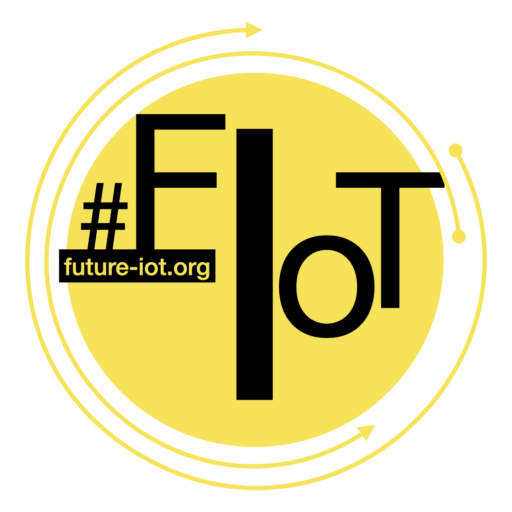Monday, Sep 2, 2019 – IoT Technology
On Monday, September 2, 2019, the summer school “IoT meets AI” started very successfully in Werk 1 in Munich. The team around Marc-Oliver Pahl had invested a significant portion of their weekend on setting up a cozy work environment on the one hand, and preparing everything for the livestream (https://future-iot.org/stream/) on the other hand.
Marc-Oliver Pahl (TUM) opened the summer school by introducing his co-organizers Arne Bröring (Siemens) and Nicolas Montavont (IMT). He credited the organizing team that did a wonderful job in helping to setup the event for the 32 participants and about 30 support staff people. In particular he mentioned Fabian Rhein (Siemens), Catharina Vos (TUM International), his team consisting of Lars Wüstrich, Erkin Kirdan, Stefan Liebald, and Christian Lübben, and Olivia Pahl (FGW), who helped almost the entire weekend, and Marlene Eder (Werk1). Marc-Oliver also introduced the sponsors, DFH/ UFA (most likely), Siemens AD, Siemens CKI, German-French Academy for the industry of the future, and of course TUM and Siemens. He explained the concept of having focus talks combined with the hackathon on the 4 challenges:
- IoT/Edge computing to handle AI processes (e.g., to detect faults in manufactured goods via video) (Mainly advised by Siemens)
- Improve the control of Autonomous Guided Vehicles (AGV) for manufacturing plants (Mainly advised by Siemens)
- Implementing a full IoT processing chain from sensors to visualization at the example of an AI enhanced game (Mainly advised by TUM)
- Environmental monitoring and analyzing assessed sensor data (Mainly advised by IMT)
Then the opening keynote “IoT meets AI” was given by Marc-Oliver Pahl (TUM) and Chris Winkler (Siemens). Marc-Oliver explained why the Internet of Things (IoT) and Machine Learning (ML) are important factors for a new phase of computing, Ubiquitous Computing. Based on a historic background, this context information set the stage for the industrial perspective on the IoT and AI.
Chris Winkler presented current industrial developments and challenges from the Siemens point of view. A focus was on decomposing tasks into autonomous modules that can collaborate. Chris also talked about deployment settings such as edge computing, and about the pivotal role of semantics.
Marc-Oliver continued with the key challenges of today’s IoT: silos. Besides vendor or spatial silos he introduced middleware silos. In his talk he introduced the concept of semantic data-centric middleware. He explained the central role of semantics for data management and discovery. He introduced the key challenges he and his IoT Smart Space Orchestration team (https://s2labs.org/) are working on: autonomous IoT data management, and autonomous service management. An application example of an industrial robot with a chainsaw that cut a chair and tables closed the talk with a teaser towards security that will be covered on Wednesday.
After the coffee break, Soumy Kanti Datta (Eurecom) introduced challenges around “IoT protocols and middleware”. A central technologie was CoAP. Soumya presented different use cases including remotely monitored cars.
For then lunch break, the entire group went to a nearby canteen.
After lunch, Arne Bröring (Siemens) talked about IoT compositions and service management. Arne emphasized challenges such as detecting node failures.
Next, Danh Le Phouc (TU Berlin) introduced the role of semantics in the IoT more in detail. Based on his research he introduced previous research work into semantic modeling and processing of semantics.
The last regular lecture was given by Laurent Toutin (IMT Atlantique; Acklio) on “Long Range radio for IoT”. Among a technology overview, Laurent gave insights into the standardization of wide area communication protocols.
In the next session Fabian Rhein introduced the concept of the challenges and the jury pitch on Thursday. Then the team heads, Florian Gramss (1), Johannes (2), Stefan Liebald (3), Alexandre Marquet (4), presented their challenges. To kickstart the participants for the pitch, Bettina Meisch from Siemens introduced the jury, the evaluation criteria, and how to manage the short time.
As last and very important part of the full Monday agenda, Marc-Oliver explained the role of the 1-minute madness and the poster about oneself and current own challenges to the participants. He explained that exchange with the fellow participants is a central element. Then he moderated the 32 excellent self-preparations. All got to know with whom they will be working the next days. Then Marc-Oliver invited all participants to have a walk around the already mounted posters on the walls.
In the evening, the summer school organizers Marc-Oliver Pahl, Stefan Liebald, Catharina Vos, and Erkin Kirdan gave the first city tour to the participants including: Eisbachwelle (Haus der Kunst) (mop), Staatskanzlei (Stefan), Hofgarten (Stefan), Odeonsplatz (Stefan), Oper (Stefan), Platzlgassn (mop) , Hofbräuhaus (CV), Hofburg (mop), Ältestes Haus (mop), Frauenkirche (CV).
The evening ended in the Augustiner Stammhaus with tasty Bavarian food. Then the participants spread out and possibly went to bed early after a day full of nice impressions.


